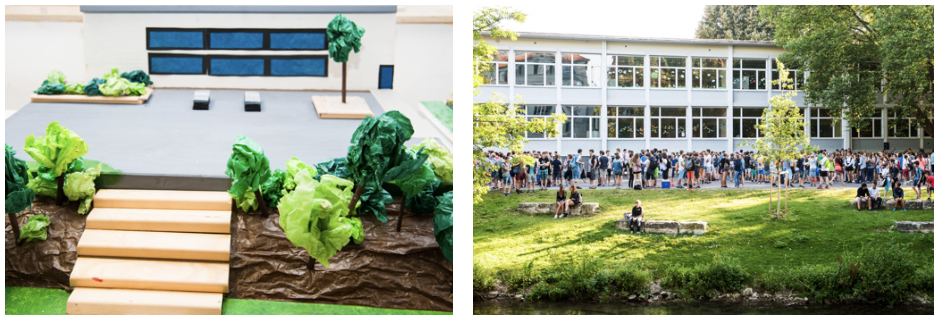The potential of project-based student participation
Living Democracy » Principals » LEADERSHIP » Democratic school leadership as a whole-school approach » The potential of project-based student participationA case history
At a gymnasium in a European city, 9th grade students initiated a project in a geography class. They were dissatisfied with the state of the school facilities and wished to make suggestions for improvements. The teacher agreed to give the students the time they required. The students worked alone or in small groups. They assessed the state of the school buildings and the external environment, then recorded their findings on posters with their analysis, photos, and architectural drawings. They worked out suggestions for improvement and produced posters and three-dimensional models to make their point.
At that time, the municipal administration was planning a major refurbishment of the school and the area around it. During a visit to the school, representatives of the urban planning office took notice of the students’ posters and models that were on display. They invited a group of students to present their ideas to the planning office. The planners appreciated the students’ efforts to create a school environment that met the needs of children and young people and the city adopted some of the students’ suggestions. The school principal supported this approach, and staff members were informed during a meeting. The students had already passed their final exams by the time their ideas took shape.

Analysis
The students initiated the project, they selected the topic because it was closely linked to their interests, and they were eager to see improvements made at their school. They set themselves tasks that were more complex and time consuming than what a teacher would usually require, but in student-controlled projects we often see a much higher level of commitment. Their project focused on real issues in school life, and their work resulted in actionable projects that could be displayed in public.
The students carried out their project in a geography class, which required a change in lesson planning. The teacher accepted his role. He showed responsiveness to the students’ interests, gave them the time they needed, and he showed flexibility in his lesson planning. Thus, he provided the students with the time resources they needed. The teacher as well as the also the school principal allowed the students to go ahead with their project, offering them support, guidance, encouragement and feedback.
The students’ project depended on the willingness of their teacher and the school principal to let it happen. This brings an element of contigency into focus. Imagine a teacher or a principal with a different mindset, and the project initiative would have been turned down. The positive response by the urban planning office is a further instance of contingency. To put it simply, it was sheer luck that the students caught the attention of urban planners who acknowledged the expertise of young people. The timing was right. A year earlier or later, the student project could not have had the same impact. However, under the prevailing circumstances, the students could influence the development of their school environment much more strongly than within the formalized framework of student participation (see Preparation Handout 3.1, Diagram in Action Handout 3.1.b).
We may assume that the project and the positive participation experience gave the students the opportunity to acquire a cluster of competences for democratic culture (CDC):
- Attitude: civic mindedness, particularly attentiveness to the needs of the community (CDC p. 41)
- Self-efficacy: feeling of confidence about tackling new challenges (CDC p. 42)
- Autonomous learning skills (CDC p.44)
- Analytical and critical thinking skills (CDC p.44)
- Ability to communicate and negotiate (CDC p.48)
Conclusions
Student initiatives are contingent – spontaneous and unforeseeable. Teachers and principals should be ready to respond adequately to let their dynamics unfold.
Teachers should offer the opportunity for reflection and assessment, as they are essential for sustainable learning in project-based and active participation. Otherwise, the positive emotions and memories may fade, leaving little impact on competences for democratic culture.
School principals and teachers should be aware to what extent student participation depends on their support. In our daily choices and decisions, we are all agents of contingency.

